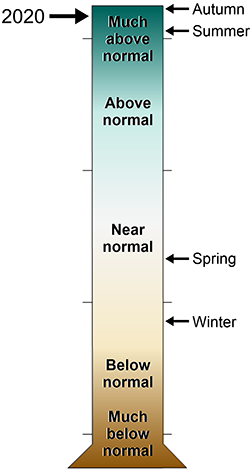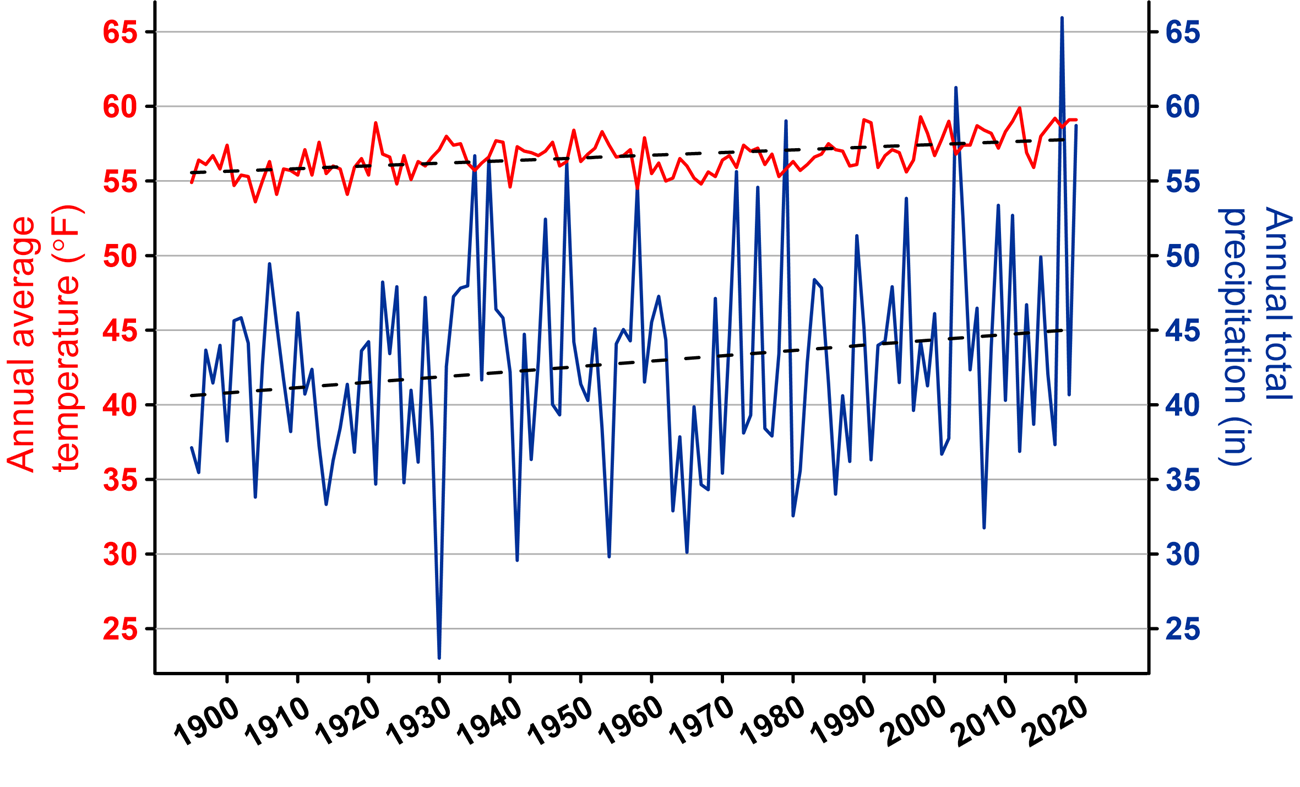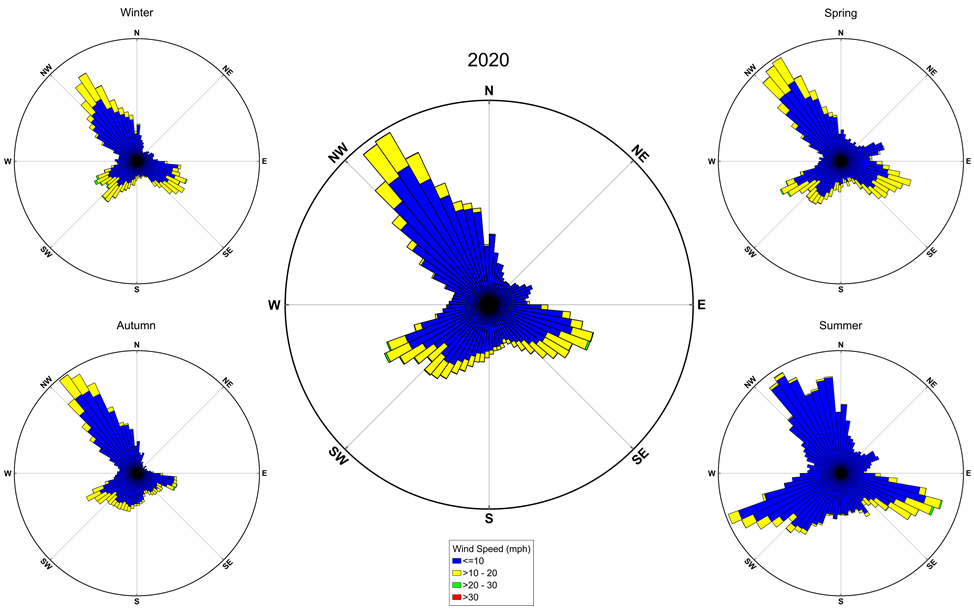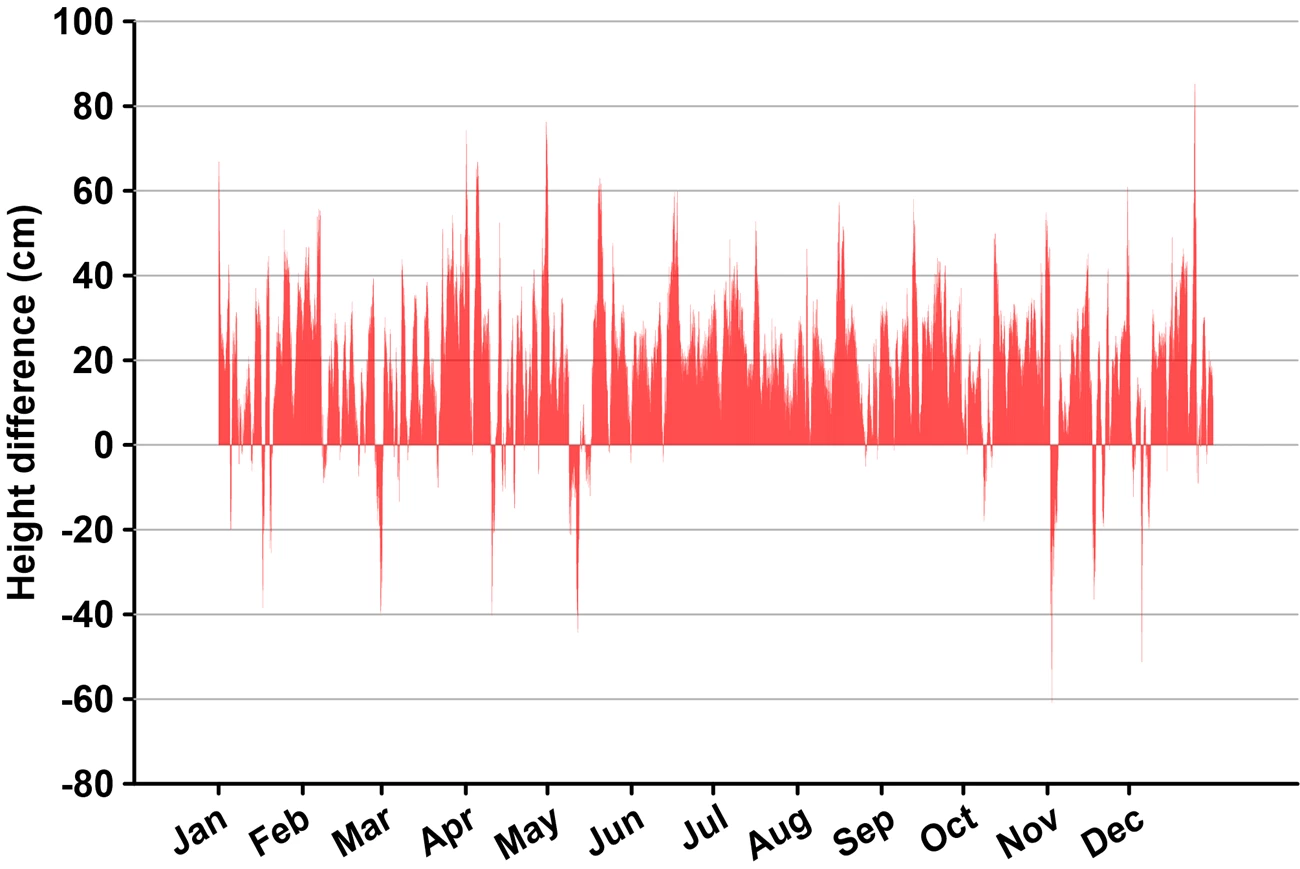Part of a series of articles titled Weather & Climate.
Article
2020 Weather in Review: George Washington Birthplace National Monument

NPS
Weather and climate play significant roles in driving both physical and ecological processes. For example, the active processes that shape the North Atlantic coastline are largely the result of meteorological events such as wind-driven waves. For research and long-term ecological monitoring, weather and climate data provide the potential for correlations to be made with observed physical and ecological pattern data.
This resource brief provides a summary of both historic and current (2020) weather data for George Washington Birthplace National Monument (GEWA), Virginia (VA). Information in this brief represents county-scale weather data averaged from the county surrounding the park, Westmoreland, VA. Because tide levels and wind can be significant for coastal parks, the annual water level and wind data are included. Individual weather station data may vary from what is reported here. Data are available from the National Climate Data Center.
Temperature
Overall, 2020 was the 4th warmest year on record with an average temperature of 59.1 °F — 2.4 degrees above average (Figure 1). Spring fell within “below normal” temperatures, autumn and summer fell within “above normal” temperatures, and winter fell within “much above normal” temperatures. 2020 had the 3rd warmest winter on record at GEWA. The warmest month was July with an average of 82.2 degrees — 4.6 degrees over the monthly average (Table 1).

| Month (2020) | Average temperature (°F) | Departure from long-term average temperature (°F) |
|---|---|---|
| January | 41.0 | +5.2 |
| February | 42.7 | +5.5 |
| March | 51.8 | +6.2 |
| April | 54.2 | -0.9 |
| May | 62.0 | -2.8 |
| June | 74.5 | +1.3 |
| July | 82.2 | +4.6 |
| August | 78.2 | +2.3 |
| September | 69.1 | -0.6 |
| October | 61.3 | +2.6 |
| November | 52.6 | +4.8 |
| December | 40.2 | +1.4 |
| Annual | 59.1 | +2.4 |
Precipitation
Overall, 2020 was the 4th wettest year on record with a total of 58.71 inches of precipitation (Figure 2, Table 2). Seasonally, winter fell within “below normal” levels, spring fell within “near normal” levels, while summer and autumn reached “much above normal” levels. Five months had less than average precipitation amounts. August had the greatest amount of precipitation in 2020 at 12.05 inches — 7.74 inches over the average rainfall of August. March had the lowest amount at 2.43 inches — 1.26 inches below average.

| Month (2020) | Total precipitation (in) | Departure from long-term average precipitation (in) |
|---|---|---|
| January | 2.84 | -0.39 |
| February | 3.17 | +0.23 |
| March | 2.43 | -1.26 |
| April | 5.03 | +1.72 |
| May | 2.62 | -1.14 |
| June | 3.14 | -0.84 |
| July | 3.95 | -0.61 |
| August | 12.05 | +7.74 |
| September | 4.55 | +0.93 |
| October | 6.99 | +3.71 |
| November | 5.58 | +2.68 |
| December | 6.36 | +3.10 |
| Annual | 58.71 | +15.87 |
Temperature and Precipitation Trends (1895–2020)
Temperature and precipitation data are gathered from the U.S. Climate Divisional Database, which stores data from January 1895 to the present, and can be accessed via National Oceanic and Atmospheric Administration’s (NOAA) National Centers for Environmental Information (NCEI) website (Figure 3). Users can choose different geographic scales (i.e., global, national, statewide), different temporal scales, and display them in various types of graphical formats. Temperature and precipitation data presented in this brief are for Westmoreland County, VA.

Wind
Wind data is collected from the NOAA National Water Level Observation Network (NWLON) station 8635027 at Dahlgren, VA, and made available through the NOAA Tides and Currents website. Each direction is divided into categories called bins that are color coated to represent the frequency of a certain wind speed. The length of the bin represents the number of times wind comes from a given direction as well as the speed of the wind. The longer the length of the bin, the more frequent the given speed was recorded (Figure 4).

Tide Levels
Water level data is also collected from the NOAA NWLON station 8635027 in Upper Machodoc Creek, Virginia. Located at Dahlgren, this station has records dating back to 1970. The data is graphed to show the difference in the predicted tide level verses what was observed (Figure 5). The offsets in height reflect the effect from storm surge on the normal, astronomically driven tide level.

Last updated: March 25, 2021
